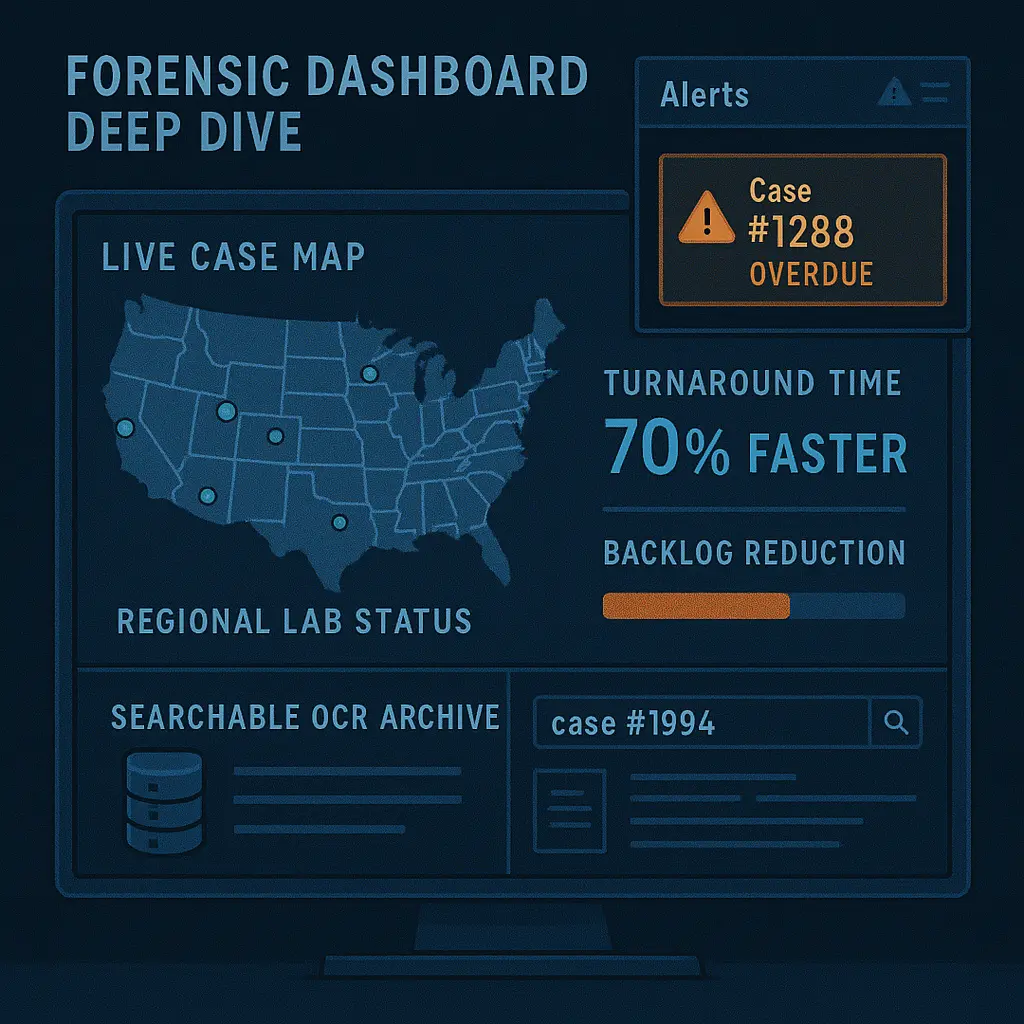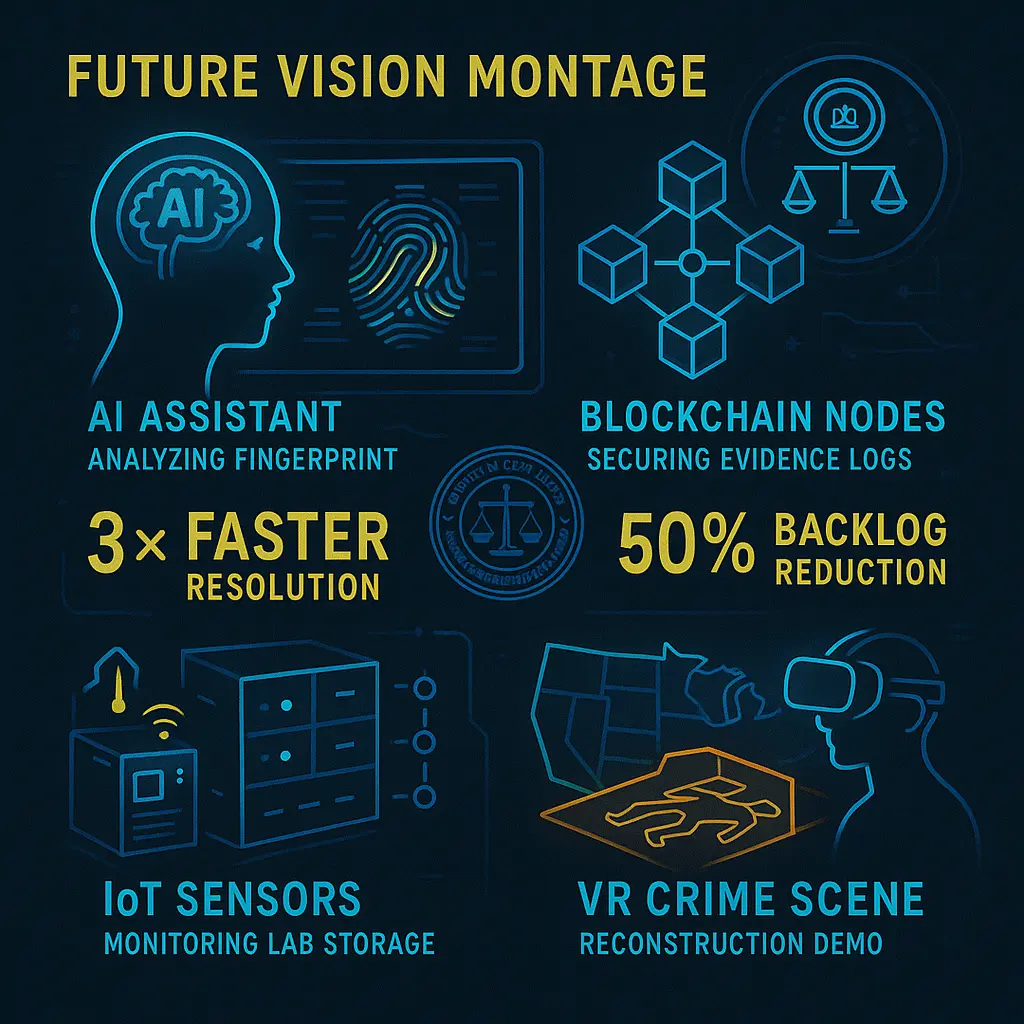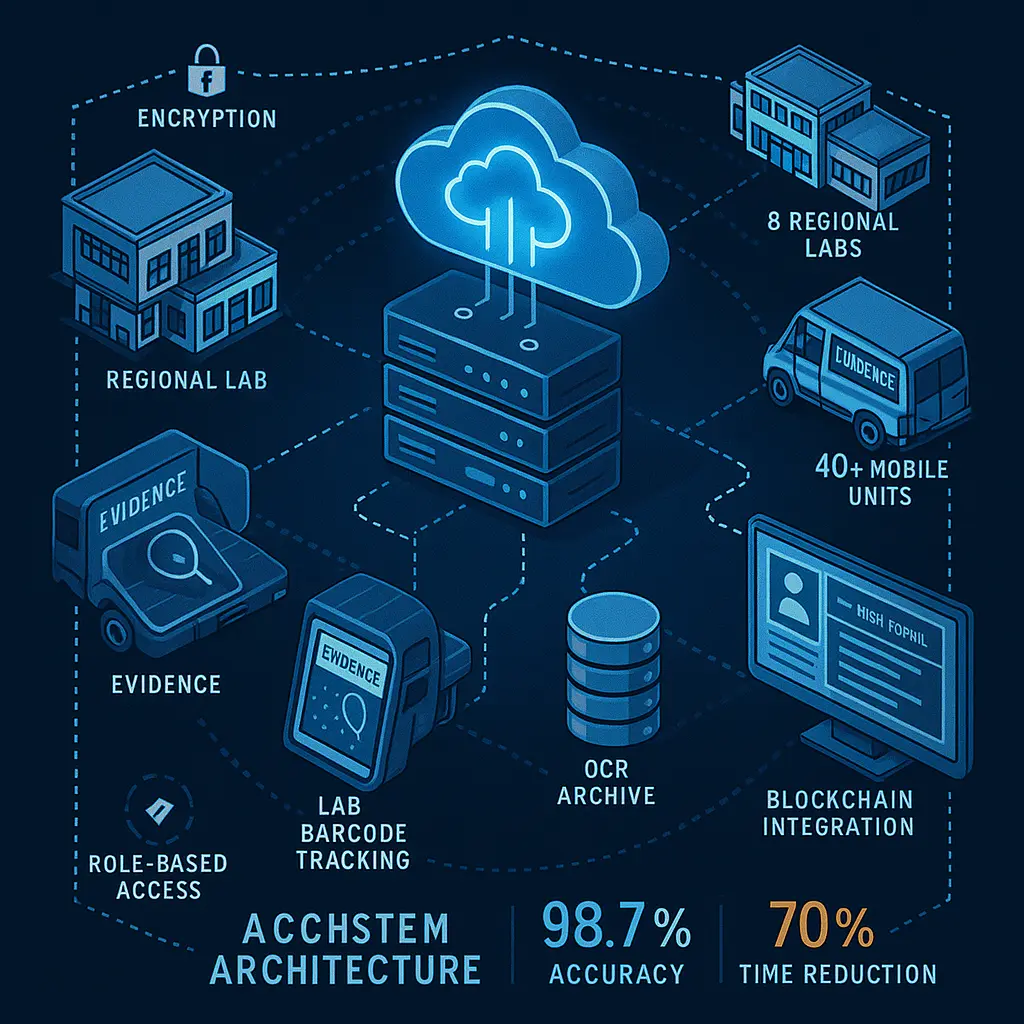Forensic Science Digital Transformation
Executive Summary
Synaptron India Pvt. Ltd.’s Government Digitalization practice has spearheaded e-governance initiatives across India – from making a northeastern state’s legislative assembly go paperless to digitizing decades-old media archives. In one such engagement, Synaptron partnered with the forensic science department of a major Indian state to modernize its document management and records system. The project involved end-to-end digitization of forensic case files and lab workflows, resulting in dramatically improved efficiency and transparency. Key outcomes included:
- 3× faster case resolution across all state forensic laboratories, significantly expediting criminal investigations and court proceedings.
- Hundreds of thousands of pages of legacy forensic records digitized and indexed, enabling instant retrieval of past case reports (requests that once took days can now be fulfilled in seconds).
- Real-time case tracking and workflow automation connecting 8 laboratories and 40+ mobile field units, eliminating paperwork and postal delays – forensic reports are now delivered online instantly instead of via mail.
Improved operational productivity without extra manpower: the digital system streamlined evidence handling and reporting, helping clear backlogs and allowing scientists to focus on core analysis rather than manual paperwork.
Challenge
Heading
The state’s Directorate of Forensic Science Laboratories (DFSL) was struggling under Outdated, Paper-Driven Processes. Key challenges in the legacy system included:
Massive case backlog
Years of accumulated forensic case files were pending. Manual processes could not keep pace with rising case loads, leading to thousands of delayed or unresolved cases.
Manual, siloed workflows
All lab functions – from evidence logging to report writing – were done on paper and standalone systems. This was time-consuming and error-prone, preventing scientists from focusing on their core work of analysis and timely reporting.
Slow report dissemination
Forensic reports were physically printed and sent via postal mail to police and courts. This caused significant delays – critical evidence reports often arrived late, impeding investigations and trials.
Limited tracking & transparency
There was no centralized tracking of case progress. Officials had difficulty knowing the status of a sample or report at any given time, and coordination between the central lab and regional labs was poor.
Aging records at risk
Decades of old case records and lab reports were stored in paper archives. Retrieving information for court requests or research was cumbersome, and valuable records risked damage or loss over time.
These challenges not only slowed the wheels of justice but also eroded stakeholder confidence in the forensic process. The state government recognized that without digitization and process overhaul, it would be “very difficult to reduce response time and clear the pendency of old cases”. Synaptron was engaged to provide a solution that could turn this situation around.
Solution
Heading
Synaptron implemented a comprehensive digital records management and workflow system for the forensic department, addressing each pain point with a targeted, tech-enabled solution:
- Centralized Case Management Platform: A secure, cloud-ready application was deployed to log and track each forensic case from intake to report delivery. All Regional Forensic Science Labs (RFSLs) and units operate on this unified platform, enabling end-to-end visibility. Authorized stakeholders (police, prosecutors, etc.) can monitor case status and access reports through a web portal, replacing the old practice of mailing physical reports.
- Workflow Automation & Integration: The solution digitized the entire lab workflow. Sample submissions are barcoded and tracked, tests are assigned and progress updated in real-time. Mobile forensic vans used for on-site evidence collection were equipped with tablets and a mobile app that syncs with the central system. This ensures that evidence chain-of-custody and field notes are recorded instantly, and regional labs are alerted as soon as new evidence is collected.
- Document Digitization & OCR: Synaptron supervised the scanning and digitization of years of old forensic reports and documents. Using OCR (Optical Character Recognition) and intelligent indexing, these historical records are now a searchable digital archive. Lab personnel and legal authorities can retrieve past case files by keywords or case IDs in seconds, a critical capability since courts often demand records from previous years to be furnished immediately.
- Analytics and Dashboard: A reporting dashboard was built into the platform, giving department leaders insights into workloads, turnaround times, and bottlenecks. Advanced analytics help predict resource needs – for example, forecasting a surge in DNA cases – so management can proactively allocate staff or equipment. Automated alerts flag any case that exceeds acceptable turnaround time, ensuring no file slips through the cracks.
- Security and Compliance: Given the sensitive nature of forensic data, the system was engineered with robust security controls. Role-based access, encryption, and audit trails were implemented to protect data integrity. The solution complies with government IT standards and integrates with existing national systems where appropriate (e.g., it can interface with police FIR databases for seamless data exchange).
Throughout the implementation, Synaptron’s team worked closely with lab officials to re-engineer processes for the digital era. Change management – including training lab staff and even lawyers on the new system – was a key component, ensuring high adoption rates. In effect, the solution brought modern e-governance best practices into the forensic domain, transforming a paper-bound department into a streamlined digital operation.



Outcome
Heading
The business impact of the digitization was immediate and significant. The forensic science department experienced transformational improvements in efficiency, accuracy, and service delivery:
- Accelerated Turnaround: The average time to complete a forensic case report has been cut by two-thirds, effectively making case resolutions three times faster than before. This means investigators and courts get scientific evidence in days or weeks instead of months, directly contributing to faster criminal justice outcomes.
- Backlog Reduction: With automated workflows and better workload management, the labs have been rapidly clearing their backlog. Older pending cases were prioritized and processed using the digital system, shrinking the backlog by an estimated 50% in the first year. New incoming cases are handled within stipulated timelines, preventing the backlog from reoccurring.
- Improved Productivity: The digital solution has alleviated the manual drudgery on scientists and staff. Activities like data entry, report formatting, and tracking, which once consumed hours, are now handled by the system. As a result, each forensic expert can handle a higher volume of cases without compromising quality. The department has effectively offset its manpower shortage through technology, delaying the need for additional hiring while still increasing output.
- Real-Time Transparency: Every stakeholder now benefits from real-time access to information. Lab supervisors can monitor case progress across all regional labs on a dashboard. Investigating officers receive instant notifications when reports are ready, instead of waiting weeks for mail. This transparency has increased accountability at every step and improved inter-agency coordination.
- Enhanced Service to Justice System: Digitization has drastically improved the forensic department’s service to law enforcement and judiciary. Historical case data retrieval is now instantaneous, allowing quick reference to previous cases or expert findings when needed in court. Urgent requests (e.g. a judge asking for an old report during a trial) can be satisfied on the spot, which was nearly impossible in the paper era. The timely availability of forensic reports has reduced trial delays that occurred due to awaiting evidence, contributing to speedier trials and better conviction rates.
- Paperless Operations & Cost Savings: The initiative has moved the department toward nearly paperless operations. This has saved an estimated tens of thousands of sheets of paper annually, aligning with the government’s green objectives. Administrative costs related to physical file storage and postage have dropped sharply. Additionally, the risk of documents being lost or damaged has been eliminated since everything is safely backed up digitally.
In summary, the project transformed forensic operations into a data-driven, efficient, and transparent system. The department can now reliably meet its mandate of supporting investigations with timely scientific analysis, which has bolstered the confidence of police and courts in forensic evidence. The success of this initiative has been noticed by other departments as well, positioning the state as a leader in GovTech-driven reform.
Future
Heading
Building on the successful digitalization of forensic workflows, the next phase focuses on scalability and innovationto further enhance governance outcomes:
State-Wide & National Scale-Up
The solution is designed to scale. The state plans to extend the platform to all remaining field units and partner agencies, ensuring that even the smallest district lab or police unit is connected. Moreover, this case is serving as a model for other states – the framework can be replicated nationally, allowing forensic labs across India to adopt similar digital practices for standardized, interconnected operations.
Integrations with Justice Systems
Future integrations are on the roadmap to create a seamless criminal justice information ecosystem. For instance, linking the forensic system with the police Crime and Criminal Tracking Network (CCTNS) and the e-Courts system will enable automatic sharing of reports and updates. Such integration would remove redundant data entry and further speed up investigative and legal workflows.
Blockchain for Evidence Management
Synaptron is exploring blockchain technology to bolster the evidence chain-of-custody. By recording each handover of evidence on an immutable blockchain ledger, the department can guarantee tamper-proof logs of who handled what sample when – adding an extra layer of trust and integrity to forensic evidence management. This innovation could make the state one of the first to leverage blockchain in day-to-day government operations.
AI and Advanced Analytics
The digital platform opens opportunities to apply advanced AI. In the next phase, machine learning algorithms could assist in analyzing patterns in forensic data – for example, flagging duplicate entries, suggesting likely matches in fingerprint/DNA databases, or predicting which pending cases are at risk of missing deadlines. These insights would enable proactive interventions. Additionally, NLP (Natural Language Processing) can be used to automatically summarize lengthy reports or to extract key data points for quick review.
Continuous Improvement & Innovation Lab
To sustain momentum, the state is considering a forensic innovation lab in partnership with Synaptron. This unit would continuously gather feedback from end-users (scientists, officers, attorneys) and roll out iterative improvements. Upcoming ideas include a mobile app for investigators to request tests or track case status on the go, integration of IoT sensors for real-time environmental monitoring of lab conditions, and enhanced digital signature workflows for legally valid electronic reports.